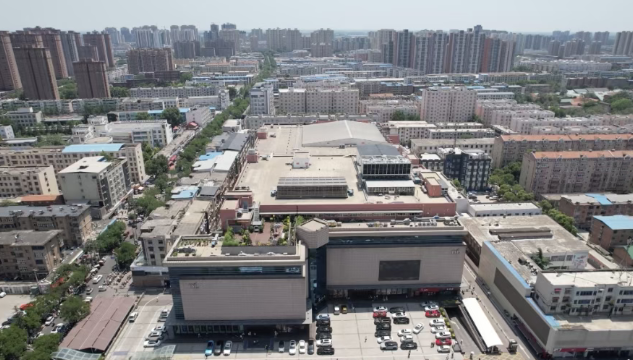Let’s show the features and advantages of smart cities using the example of Singapore which was ranked 7th among other smart cities globally in 2023.
Singapore has positioned itself as a global leader in technological innovation and digital transformation. With its innovative approaches to urban planning, transportation, and energy management, Singapore showcases a holistic commitment to creating a green and smart urban environment. It was Singapore that initiated the creation of the ASEAN Smart Cities Network in 2018, and in many ways its experience and initiatives in the field of smart city development determine global and regional urbanization trends.
With a land area of 720km2, Singapore is the smallest country in Southeast Asia. At the same time Singapore is a dynamic developing city with high population density in highly urbanized area. According to the UN data, the population density in Singapore was 8,919 per km2 in 2023. Urbanization growth and immigration that Singapore have experienced in the past few decades, has resulted in overcrowding in the city, strained public infrastructure, and driven the high cost of housing.
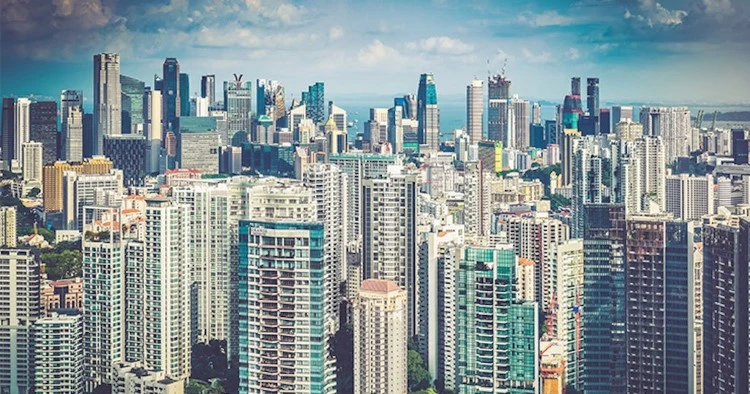
Singapore’s Smart Nation journey began in 2014 when Prime Minister Lee Hsien Loong launched a large-scale Smart Nation program. The Singaporean system was the first in the world in terms of the level of integration and scale. The Smart Nation blueprint served as a guiding document to transform Singapore into a connected, technologically advanced nation and outlined key focus areas, including the Internet of Things (IoT), data analytics, and enhanced digital infrastructure. Since then, the city-state has been developing as a global exemplar of how smart technologies can be harnessed to transform urban spaces into models of sustainability and efficiency.
The Smart Nation initiative represents a development of earlier efforts aimed at digitizing public service delivery, which began in the late 1980s and 1990s through the government’s Civil Service Computerization Program. This was followed by the IT2000 strategic plan, the iGov 2010 initiative, and the 2015 eGov Masterplan. The successful implementation of the Smart Nation Platform was due to Singapore’s commitment to collaboration with industry partners, startups, and academia to drive innovation. The country has invested significantly in science, technology, engineering, and mathematics education to ensure that its citizens have the skills and knowledge needed to succeed in the digital economy. The government has also launched several initiatives to promote lifelong learning and skills upgrading, including the SkillsFuture program. Singapore has also established several innovation hubs, for example the Jurong Innovation District, and the One-North Research and Development Park, which provide entrepreneurs and startups with access to funding, mentorship, and research facilities.
There are the main directions of the smart city approach development in Singapore:
- Smart transportation infrastructure.
Urban density and mobility are issues that are quite unique to the island nation. Hence, the creation of the Intelligent Transport System (ITS) has eased traffic congestion. The city has implemented an extensive network of sensors, cameras, and data analytics to monitor traffic flow and manage congestion. The ITS comprises several ‘smart’ transportation technologies, including one of the world’s first Electronic Road Pricing Systems, real-time traffic information delivered through GPS-enabled taxis, and an integrated public transportation structure. The Electronic Road Pricing (ERP) system dynamically adjusts tolls based on real-time traffic conditions, encouraging the use of public transport and reducing carbon emissions from vehicular congestion. Singapore’s commitment to sustainable mobility is further exemplified by its autonomous vehicle trials and the widespread adoption of electric buses. These initiatives aim not only to enhance the efficiency of transportation but also to contribute to the reduction of greenhouse gas emissions. With an island-wide network of sensors and real-time data analytics, the city-state has achieved an impressive 20% reduction in traffic congestion over the past five years. Singapore has created a convenient and flexible ticketing system using the EZ-Link card and introduced flexible fares and discounts for socially vulnerable groups. Singapore has created a best-in-class public transport system, which is accessible, efficient, convenient, sustainable, and at the same time affordable, the report from consulting firm McKinsey said in 2018. Of the residents surveyed in Singapore, more than 80% said they were satisfied with the overall public transport situation.

- Integrated urban planning with digital twins.
Singapore embraces the concept of digital twins, virtual replicas of the city that incorporate real-time data from various sources. Special system tools accelerated the process of transforming raw GIS, lidar, and imagery data into reality mesh, building, and transportation models of the country. This innovative approach to urban planning enables authorities to simulate and optimize the impact of development projects on the environment, energy consumption, and overall sustainability. By utilizing digital twins, Singapore can assess the environmental implications of construction projects, manage green spaces effectively, and enhance energy efficiency in buildings. This integrated urban planning approach facilitates the evolving of the city in a sustainable manner, considering environmental factors.

- Smart energy management and sustainable buildings.
Singapore places a strong emphasis on smart energy management to reduce its carbon footprint. The city-state employs smart grids and advanced metering infrastructure to monitor and optimize energy consumption. New energy-efficient buildings, equipped with sensors and automation, contribute to the overall sustainability of the urban landscape. For example, the Marina Bay Sands complex, an iconic symbol of Singapore’s commitment to sustainable architecture, incorporates innovative design elements such as rainwater harvesting, energy-efficient lighting, and green roofs. These features not only reduce the environmental impact of the structure but also serve as a model for sustainable construction practices in the city.
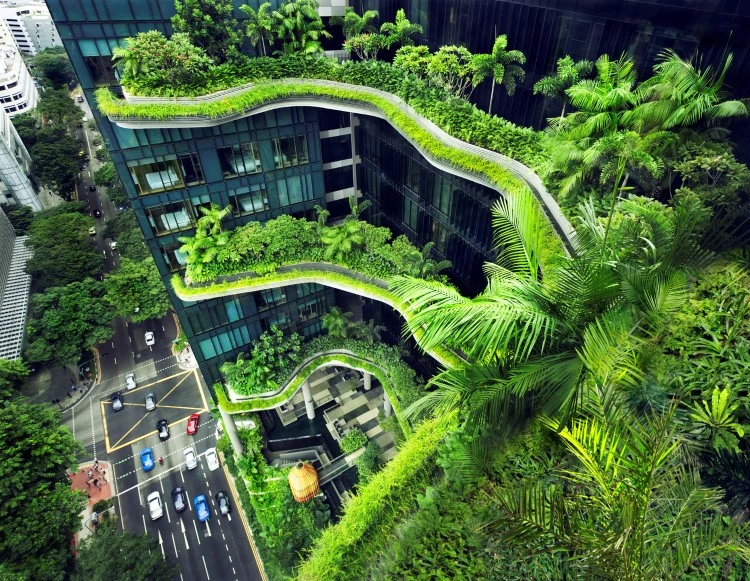
The implementation of smart grids and energy-efficient buildings has led to a 15% decrease in overall energy consumption, contributing significantly to the city’s sustainability goals. According to its Green Building Masterplan, Singapore is aiming to make 80% of its buildings eco-friendly by 2030.
One of the examples of using smart city technologies for sustainable development in Singapore is a new eco-town of Tengah which is one of the initiatives to reduce the carbon footprint and to promote sustainability in energy, water and waste. The eco-town includes 42,000 new homes across five residential districts. This project provides giant solar-powered air-conditioners and centralized cooling system, vacuum garbage collection, subterranean roads for electric vehicles and a car-free town center, urban farms, green architecture etc. Tengah is being dubbed a “forest town”, due to its abundant greenery and public gardens. A 100 meters wide ecological “corridor” is being maintained through its center, providing safe passage to wildlife and connecting a water catchment area on one side to a nature reserve on the other.
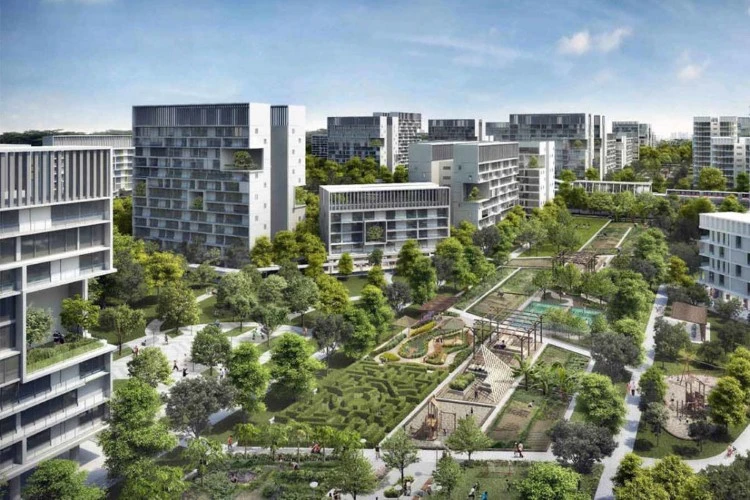
- Water management and conservation.
Singapore is surrounded by water. However, it has almost no natural water resources. Previously Singapore was dependent on imported water from Malaysia. According to the 1962 agreement more than 50% of the water for its needs Singapore bought from Malaysia at a fixed price (950 million liters per day). In 2011, this was the equivalent to 56% of Singapore’s water usage. Therefore, Singapore placed a strong emphasis on water management and conservation. Smart technologies play a crucial role in optimizing water usage through the implementation of sensors and IoT devices. The city-state has developed a comprehensive system for collecting, treating, and recycling wastewater, ensuring a sustainable and resilient water supply. The Smart Water Grid utilizes sensors to monitor water quality, detect leaks, and optimize the distribution of water resources. This proactive approach to water management contributes to the city’s resilience in the face of climate uncertainties while promoting sustainable water practices.
Nowadays several water reclamation plants and factories in Singapore produce NEWater from wastewater which covers 40% of daily demand. In 2022 five desalination plants produced up to 30% of the city’s water needs. Rainwater is also used in Singapore. Most of the catchments are in the Central Catchment Nature Reserve of еру city, a protected and reforested area. River estuaries as well as houses rooftops are also used for water catchment.
Singapore uses special measures to prevent flooding and clogging of water supply systems. Stormwater drainage system of the city is completely separated from the city’s sewer system. Public roadside drains, canals and waterways help to reduce flood-prone areas. Thanks to the smart water management system, the damage from flooding has been reduced many times.
- Waste reduction.
In Singapore great importance is attached to waste recycling. The amounts of recycled waste reached 57% in 2022 compared to 52% in 2020. According to Singapore’s Zero Waste Masterplan the national overall recycling rate is expected to be 70% and waste-to-landfill per capita per day to reduce by 30% by 2030. Non-domestic recycling rate is anticipated to increase up to 80% and domestic recycling rate up to 30% in 2030. The city’s smart waste management system, with sensors in waste bins, has resulted in a 30% reduction in unnecessary waste collection trips.
- Smart governance and citizen engagement.
Singapore leverages smart governance and citizen engagement to promote sustainable practices and create a sense of shared responsibility. The development of smart governance assumes collaboration between public agencies, research institutions, startups, and firms providing new data-driven services. The Smart Nation initiative incorporates digital platforms and mobile applications to facilitate real-time communication between citizens and the government. Residents can access information on environmental initiatives, report issues, and actively participate in shaping the city’s sustainability agenda. The Smart Nation app, a mobile application, provides citizens with a one-stop platform to access a wide range of government services and information. It offers real-time updates on emergencies and incidents happening in the user’s area and allows citizens to report issues such as broken public facilities or littering. The Smart Nation Platform extends its reach into the healthcare sector by leveraging technology to improve patient care and healthcare delivery. Initiatives such as telehealth services, wearable health monitoring devices, and the use of data analytics in healthcare management contribute to a more connected and responsive healthcare system.
In Singapore, most smart city technologies are designed to be available for different social groups. Moreover, the government has actively involved citizens in the Smart Nation initiative, encouraging them to provide feedback and ideas. For example, the government has launched the program Smart Nation, Smart Towns, which encourages citizens to propose innovative ideas to make their neighborhoods more efficient, livable, and sustainable. Many of the proposals were implemented. Singapore has also launched several initiatives, for example Smart Nation Ambassadors, to educate citizens about technology and its benefits.
The contribution of smart city technologies to the sustainable development of Singapore is also insured be the fact that these technologies have been implemented in urban planning aiming to develop a green sustainable city. One such recent urban development plan is Green Plan 2030 which was launched in 2021 by the government and involves not only the use of new smart technologies but also the motivation of people and businesses to participate in the sustainable development of the city-state. The Green Plan comprises five pillars that will influence all aspects of city life: City in Nature, Energy Reset, Sustainable Living, Green Economy, and Resilient Future. Some key programs of the Green Plan include setting aside 50% more land (around 200 hectares) for nature parks, all within a 10-minute walk of respective households, and aiming to plant one million more trees across the island. With the vision of creating a City in a Garden, the Singapore government has been “greening” its roads and infrastructure, transforming the country’s parks and gardens into spaces for everyone to enjoy with the help of new technologies. One example is the Supertree Grove, which is a part of Gardens by the Bay. Consisting of 18 large-scale “Supertrees” (25-50 meters tall), vertical gardens of Supertrees integrate solar power generation and rainwater collection into their design. This project is one of the most popular tourist attractions. Its photos are among the most popular on Instagram and TikTok feeds, along with Central Park in New York.
Can a smart city automatically become sustainable?
Singapore stands as a shining example of a city leveraging smart technologies to create a sustainable urban future. By integrating innovative solutions across transportation, urban planning, energy management, and citizen engagement, Singapore showcases how a holistic and forward-thinking approach can gradually transform a city into a sustainable one. As urban centers around the world grapple with the challenges of rapid urbanization and environmental concerns, Singapore provides valuable insights into the transformative potential of smart technologies in creating green, resilient, and livable cities. At the same time the example of Singapore does not mean that the development of smart city automatically leads to sustainable development without problems. This is evidenced by the fact that Singapore was ranked only 48th in Sustainable Cities Index 2023.
Using the example of Singapore and other smart cities we can see a complex landscape of challenges that can impede rather than propel sustainable development goals. Among them, there are the most obvious and widely discussed, for example ecological footprint and cost of smart technologies, privacy of personal data, overdependence on digital technologies and inequitable access. There are many tools and practices to deals with these challenges which are widely used in smart cities, including Singapore. We will focus here on only one infrequently mentioned challenge.
Apparently the biggest challenge for sustainable development in smart city is existing patterns of economical development and decision-making. For example, despite the measures taken for the sustainable development and use of new technologies there are some serious problems in Singapore that make its sustainable development problematic because of this factor.
Singapore has relied heavily on land reclamation, or dumping solids mainly sand, concrete and waste products into the ocean to increase its land area. Over the past two centuries, Singapore has this area by 25%. This project is considered important for Singapore’s growth, land reclamation has deleterious environmental impacts, both at where land is reclaimed, and where the sand is mined. In Singapore this led to the destruction of mangrove forest the area of which has decreased by 90%. Land reclamation has permanently been changing patterns of tides that lead to further mangrove and coral reef deterioration.
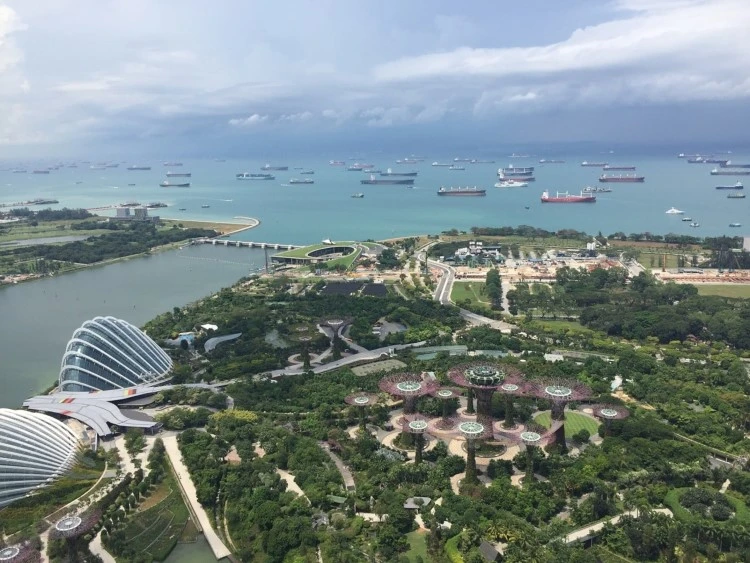
Despite the Singapore’s plans to develop solar energy, solar energy contributed less than 1% to Singapore’s total energy mix in 2021. Now Singapore relies heavily on imported energy, mainly from fossil fuels.
Singapore is also a regional leader in oil and gas processing. At the same time, Singapore has developed new methods of energy production, such as palm oil biodiesel attempting to reduce dependence on imported energy. There is a world’s largest palm oil diesel factory. Palm oil is the most unsustainable agriculture product which was phased out by Europeans Parliament in 2017. The cultivation of the oil directly contributes to climate change, deforestation, and habitat loss.
It is not very easy to change the established patterns of economic development in Singapore, given the high degree of state control and hierarchy in decision-making regarding the programs of technological and sustainable development of the city. Perhaps greater democratization of this process, strengthening mechanisms of participation and accountability would allow Singapore to find alternative solutions to existing problems.
As cities worldwide embrace the promise of smart technologies, it is crucial to confront and address the challenges they pose to sustainable development. A holistic approach that prioritizes environmental responsibility, social equity, and cybersecurity resilience is essential for steering smart city initiatives in a direction that aligns with broader sustainability goals. By acknowledging and mitigating these challenges, urban planners, policymakers, technologists and citizens can work together to create truly smart cities that contribute positively to a more sustainable future.


